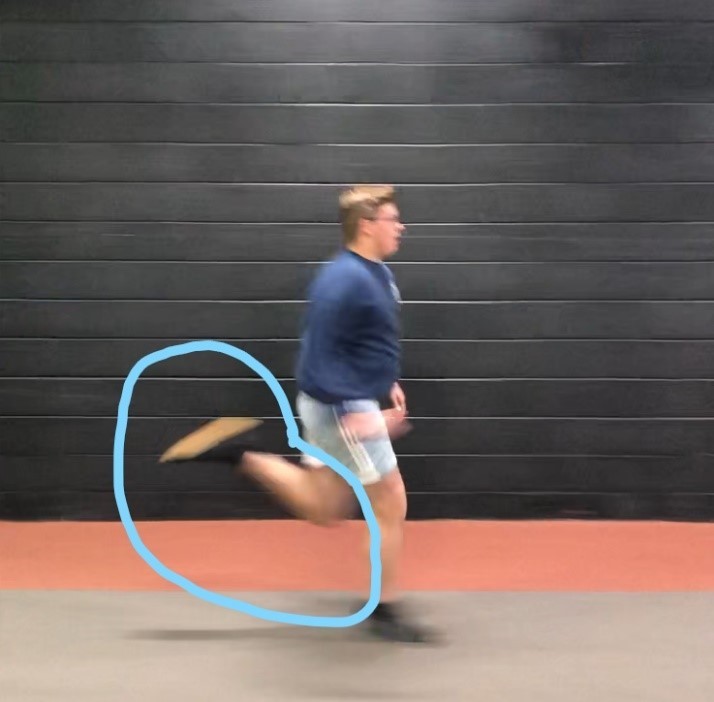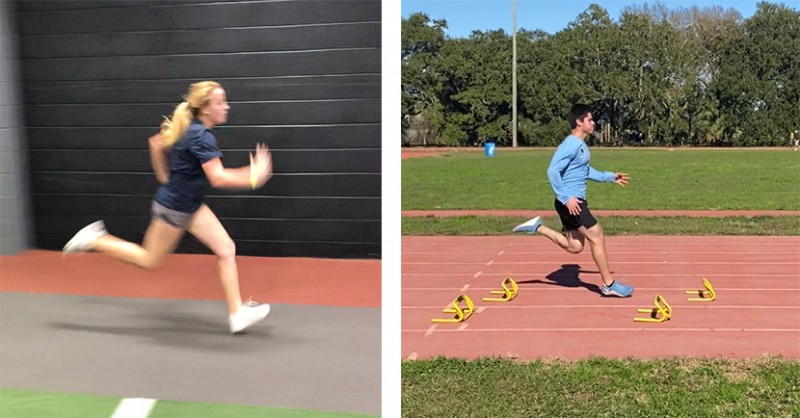
Sprinting is a movement that requires tremendous coordination from the body. The limbs need to move in perfect rhythm with optimal synchronization of the muscles. There also needs to be smooth transmission of the neurological signals sent throughout the body.
No need to worry! The body does all of this on its own!
There are a lot of pieces that get overlooked as it pertains to sprinting. Many of these oversights tend to be because the body does them for us. The other reason for many oversights is due to the fact that we as coaches like to focus on the bigger training pieces. Coaches tend to focus on the big blocks of speed training: technique, strength of the big muscle groups, and mobility through our major joints.
One of the oversights that I want to address today is the lack of attention paid to the hip flexor group.
The hip flexor is a muscle group made up of the Iliacus and Iliopsoas, with assistance from the rectus femoris and sartorius muscles. The hip flexor muscle group is responsible for flexing the hip or bringing the knee up toward the shoulders.
As you can imagine, this motion is imperative to movement. Even the act of walking requires this muscle group to lift the thigh with each step. You can also imagine the amount of work this muscle group does during athletic events—lifting the leg repeatedly and doing so in a powerful and explosive fashion when the athlete is required to accelerate.
More than just its ability to lift the leg, the hip flexor group is responsible for the body’s ability to slow the leg down as it passes behind the body during a stride.
RELATED: No Non-Sense Guide to Team Sport Sprint Training
This characteristic is known as the eccentric strength of the hip flexor. Meaning, the hip flexors ability to control the lengthening of the muscle. This muscular quality can be the difference between a fast, efficient athlete and an athlete that will struggle greatly in competitive sport.
There are multiple factors at play here, including hip orientation during movement, core strength and involvement, and toe off relative to the center of gravity. We’ll save all these elements for another time.
Today I want to focus on how hip flexor strength affects running form and technique. Anytime you hear a coach talk about running mechanics, you will hear them refer to front side and backside mechanics. This simply refers to what is happening to the leg on the body's front side or backside. As soon as the leg passes under the body, it alternates from a front side to a backside position. As the leg passes under the body, the foot stays on the ground for a short period of time before it begins to travel upward and behind the hip. This backside position is the position I would like to address.
The characteristics and capacity of the hip flexor muscle group have a dramatic effect on what happens in this backside position. They will impact how far back the leg travels, the height of the foot above the ground, the path of swing back to the front side, the time it takes for the leg to travel back to the front side, and eventually how high the knee travels in the front side before moving back down.
I want to give you a few examples of athletes, in stride, and exactly what we are addressing.
As you can see with the athlete on the left, the back leg travels back much further away from the body than the athlete on the right. Also, you will notice the orientation of the leg compared to the timing of the stride. Both athletes are approaching touchdown within their stride; however, one athlete is still completely extended behind the body while the other athlete is in mid-swing phase preparing to enter front side swing. This will obviously affect the timing of the movement. For the athlete on the left, with the back leg extended at this point in the stride, they will have very little time to get the leg back into a front side position to prepare for the next stride.
As mentioned before, there could be several factors at play here, so I don’t want to make it seem like hip flexor strengthening will fix everything.
Assuming the athlete can maintain proper posture and orient the hips in a neutral position, the hip flexor can now be evaluated in its effectiveness and control.
When observing an athlete from the side during upright sprinting you can begin to evaluate the hip flexors' capacities in movement. When you observe athletes that have an extended rear leg with a high heel kick, as you see in the athlete on the left, you can begin to assume that they likely have less eccentric strength within their hip flexor. Eccentric refers to the lengthening of a muscle during contraction.
As the foot travels backward under the body and into the air, the hip flexor is working to slow the limb in order to reaccelerate it in another direction. Athletes with good hip flexor strength will be able to move the leg back under the hip much earlier in the stride such as what you see with the athlete on the right.
The concentric strength of the hip flexor is also very important and has the responsibility of lifting the knee upward prior to the leg driving down to the ground. However, like with the backside heel kick, there are many other factors to take into account.
Now, knowing the importance of hip flexor strength in running, what can we do about it? I believe one of the most beneficial and specific things we can do with our athletes is high volume form running drills. Whether it be the A-series, B-series, or C-series, there is a high demand for the hip flexor. To do this, over extended distances allows a specific means of strengthening the hip flexor. There are also many other benefits to form running drills from a technical standpoint that should not be overlooked.
Other tools that can be used include hanging and supine leg lifts, as well as ankle band resistance exercises. These are all very beneficial and should make their way into a training program. When using these, it should incorporate some level of isometric holds and eccentric movements as well.
The implementation of training the hip flexors will depend on your program and the training that is already being accomplished. However, the key is that it is being addressed.
The strength of our athletes is a key ingredient for their success in their speed development. However, their strength is not always cultivated solely in the weight room.
Header image credit: Sergey Nivens©123rf.com
Nick Brattain is the owner of Brattain Sports Performance and the high-performance coach for Isidore Newman School in New Orleans, Louisiana. He is a former collegiate sprinter, has spent decades performing, studying, and coaching linear speed development with athletes from middle school through college.












